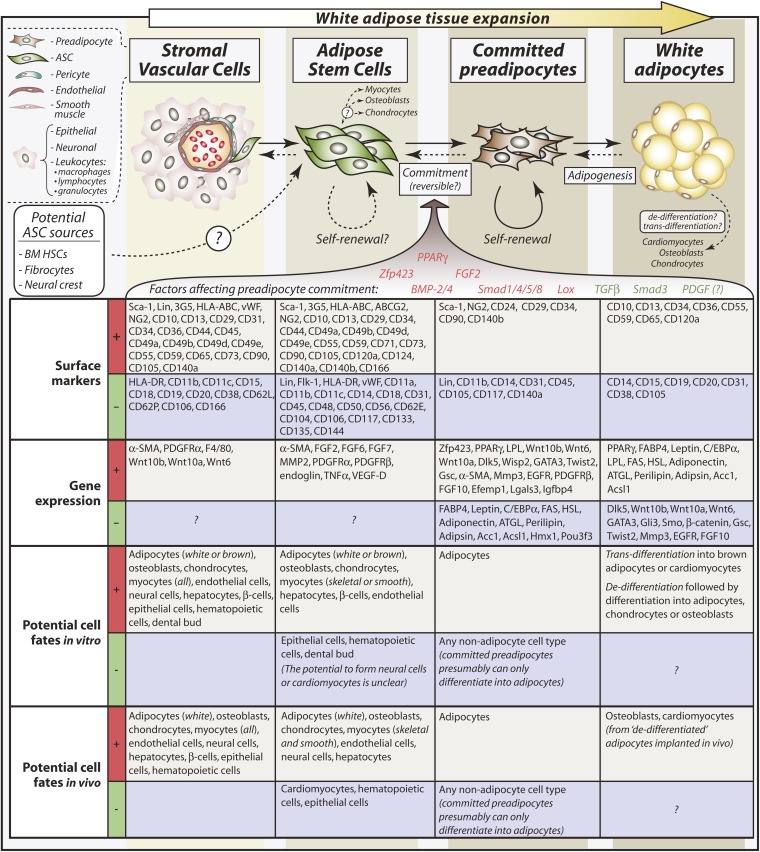Fig. 2.
Relationships between SVCs, ASCs, committed preadipocytes, and mature adipocytes. Typical surface markers and other genes expressed or absent in each cell type are shown. More-extensive lists of surface markers and cell fates are provided, with citations, in Tables 1 (or see supplementary Table I) and 2, respectively. Comparisons of surface markers or other genes differentially expressed between the different cell types reveal potential mechanisms of preadipocyte commitment. Factors that positively regulate preadipocyte commitment are shown in red, and negative regulators are shown in green; effects of PDGF on preadipocyte commitment remain uncertain. Arrows shown as dotted lines designate pathways that are not yet firmly established. For example, whether committed preadipocytes continuously derive from ASCs or merely replenish through autologous self-renewal remains incompletely understood. Equally, whether ASCs or committed preadipocytes can revert to pericytes or ASCs, respectively, requires further investigation. Although mature adipocytes can give rise to other cell types in experimental conditions, the relevance of such trans-differentiation to physiological contexts is not clear. Finally, formation of adipocytes from BM HSCs, fibrocytes, or the neural crest has been reported, so it is possible that ASCs derive from some of these cell types; however, these findings remain controversial.

